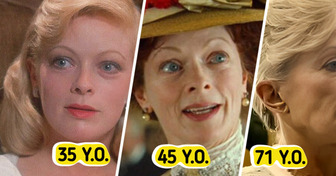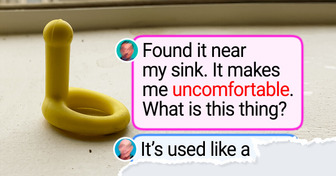13 People Reveal Their Glow-Up Secrets — The Results Speak for Themselves


Movies are among the most powerful drivers of pop culture, which is why the images and ideas they present often leave a lasting mark on our minds. Countless myths — including many about history — have originated from popular films. This time, we’ve decided to debunk some of the most common misconceptions about Ancient Egypt. And as a bonus, you’ll discover a fascinating fact about Cleopatra that’s rarely mentioned in movies.
The history of Ancient Egypt is around 30 centuries long. During this time, there were a lot of rulers and even different gods. But this didn’t stop Hollywood producers from mixing historic figures from different time periods in the same films. For example, the first film in The Mummy franchise is based on the tragic love between Imhotep and Ankhesenamun.
But the funny thing is that these 2 couldn’t have met in real life because they lived more than 1,000 years apart. Imhotep was born in the twenty-seventh century BCE, and Ankhesenamun was born in 1348 BCE and was Tutankhamun’s wife.
Queen Cleopatra is considered one of the most famous Egyptian women in the world and is famous for her beauty. However, presumably, she couldn’t boast a perfect appearance because the queen’s portraits made during her life were often idealized. Historians believe that she was small, had masculine features and an aquiline nose, and that people would represent her differently than she actually was, according to the region the art was made in (sometimes she’s curvy and feminine, and other times she’s masculine and thin, for instance). The powerful queen likely captivated everyone with her charm, sharp mind, and speaking skills.
Unfortunately, there is still a popular opinion that pharaohs built the pyramids in order to glorify their greatness and remain in history far after their death. That’s why we think a huge number of enslaved Egyptians engaged in the construction process. However, this isn’t true. Archeologists found graves of simple people near the pyramids who were buried there with special honors. It’s believed that those were the workers of different professions who were paid well for this enormous work that lasted for many years.
The Egyptian Sphinx is as famous as the pyramids in Giza, and many people still wonder why this ancient statue lacks a nose. Most of them prefer to believe that Napoleon’s army was learning to shoot guns by targeting this part of the statue. However, the images of the Sphinx without a nose are present in the works from 1755, while Napoleon wasn’t born until 1769. This means the great military man has nothing to do with this missing nose. Why the Sphynx doesn’t have this part of its body still remains a mystery.
Filmmakers love to fill tombs and catacombs with an enormous amount of well-thought-out traps. And if the main character successfully passes through them all, a bunch of sparkling treasure will be waiting for them at the end of a long hallway. Otherwise, why would they go into these scary ancient labyrinths in the first place?
The people who constructed the pyramids did try to protect the tombs, but they didn’t have the rich fantasies that many scriptwriters do. For example, they would construct a fake room next to the real one and make it look robbed to baffle looters. Also, they would build deep wells that a person wouldn’t be able to get out of alone. According to Professor Lehner, the system of a “primitive machine” that was found in the Great Pyramid of Giza was quite complicated for those times. It blocked the way to the Pharaoh’s chamber with giant granite units, which made it difficult for robbers to get inside.
Treasures, in their turn, would often remain a dream because only a few of the tombs excavated by archaeologists contained jewelry. In most cases, any treasure present had a historical and cultural value, not material.
From movies, we know that Egyptians used hieroglyphs. It’s true, but they would also write down holy and common texts. In priestly life, they would use a form called hieratic writing, while demotic writing was used for other purposes.
For pharaohs, life was far from a fairytale, even though they were kings. It was full of ubiquitous sand, lice, parasites, and many other unpleasant things that movies don’t talk about. This is probably why so many mistakes are made by filmmakers when portraying the lives of the ancient Egyptians.
For example, Egyptians would wear wigs that not everyone could afford to indicate beauty and status. Also, many women and men would use eye makeup because they believed cosmetics, in those times, had a disinfecting and protective effect.
Discovered frescoes that portray the pharaohs and other dignitaries depict tall, stately, and beautiful people. Movies feed the belief that they all were like this. However, taking into account their diet (which consisted of bread, honey, and drinks containing yeast) as well as their lifestyle, the ancient kings of Egypt, together with priests, were far from ideal-looking. It’s likely that some of them were obese and suffered from diabetes.
Research has revealed that Tutankhamun’s parents were siblings, and the young pharaoh himself went on to marry his half-sister, Ankhesenpaaten. The couple had two daughters, both of whom were stillborn. Cleopatra, in turn, was married to her brother, Ptolemy XIII, for three years.
Be sure to check out our other article about myths that movies have made us believe about Ancient Rome and Greece.











